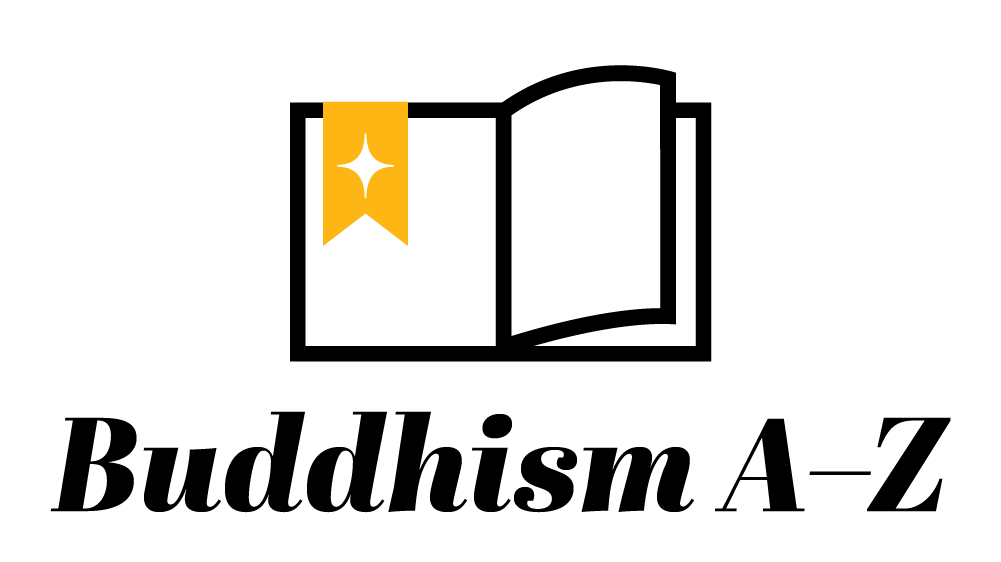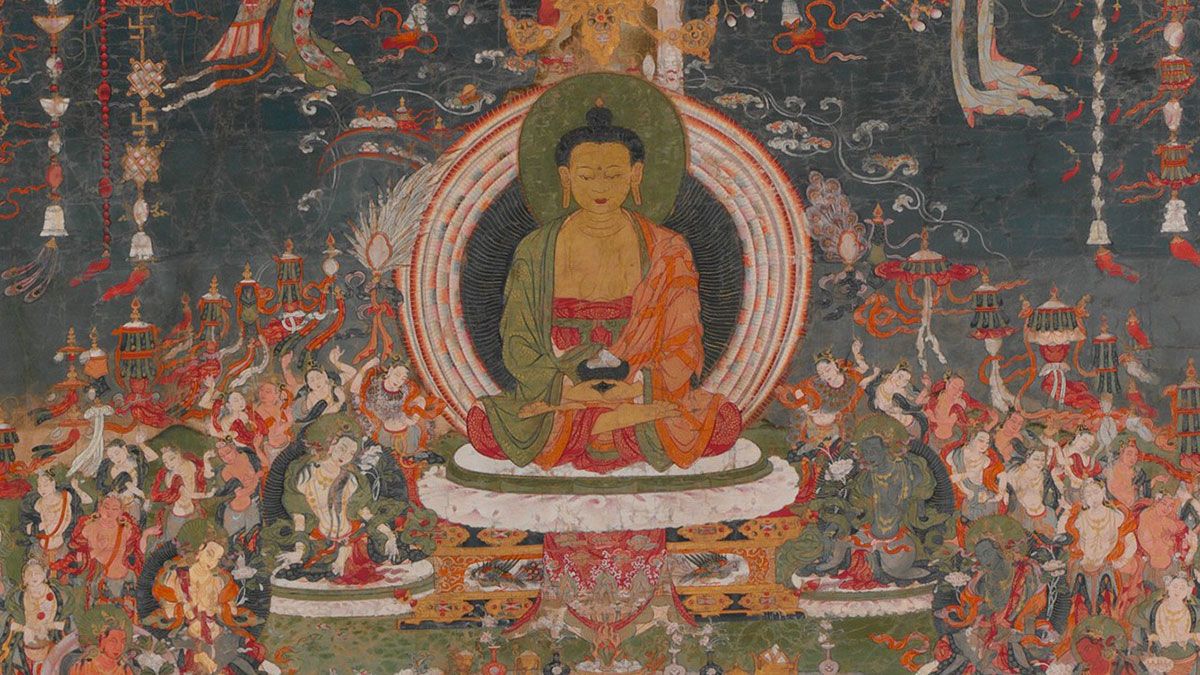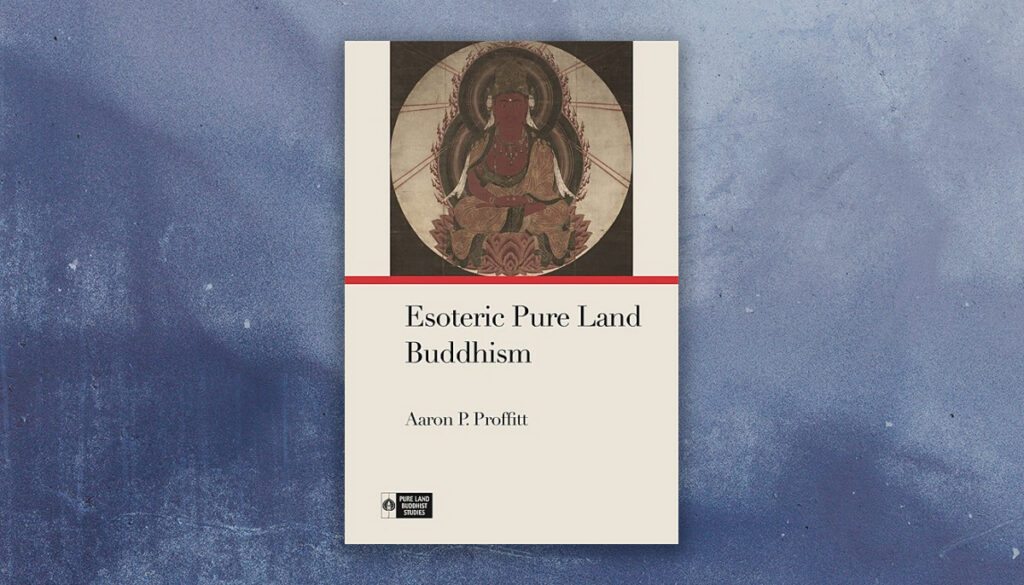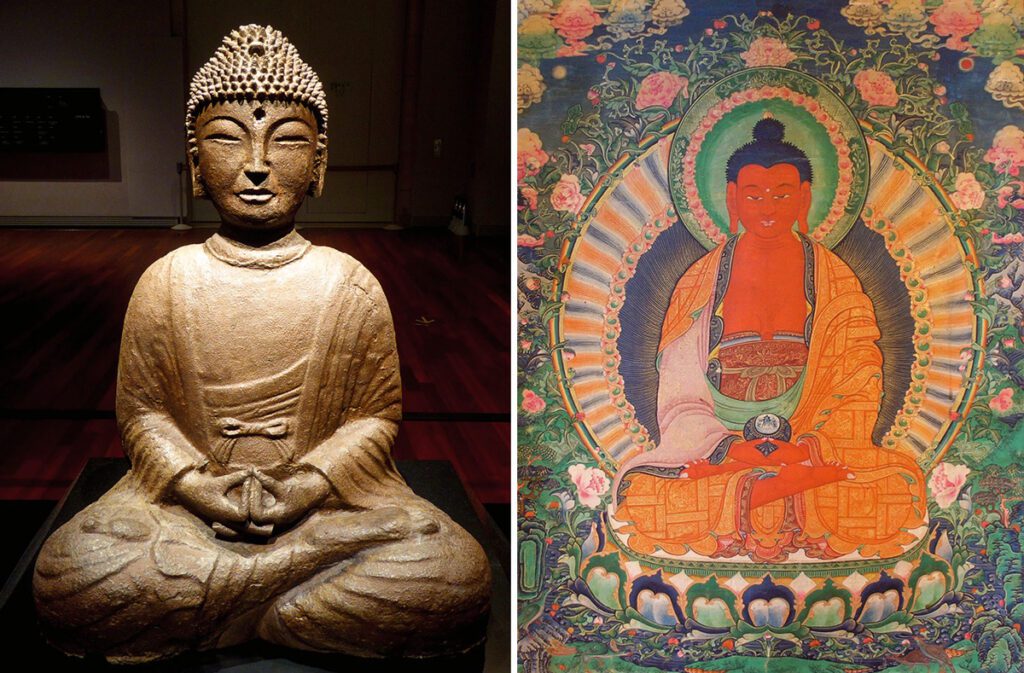Amitabha (Sanskrit, “Limitless Light”) is one of the five primordial or dhyani buddhas of Mahayana Buddhism. Also called Amida or Amitayus (“Limitless Life”), Amitabha is the central buddha in Pure Land Buddhism, and as such, is one of the most widely worshiped in Mahayana Buddhism. In Vajrayana Buddhism, Amitabha is renowned for longevity, profound insight, pure perception, and the purification of the aggregates (skandhas) through a deep understanding of the emptiness of all phenomena.
Pure Land teachings say that Amitabha was once a monk known as Dharmakara. Guided by forty-eight vows, he aspired to become a buddha and establish the Pure Land, a realm beyond our ordinary world,. Notably, his eighteenth vow ensured rebirth to anyone sincerely calling upon him, even just ten times. His nineteenth vow promised that he would appear to those invoking his name at the time of death. Amitabha’s boundless merit culminated in the creation of Sukhavati, “the Land of Ultimate Bliss,” in which those reborn there could learn the dharma and aspire to become bodhisattvas and buddhas themselves.
Amitabha’s boundless merit, stemming from his countless virtuous deeds as Dharmakara, earned him the epithet “the Buddha of Infinite Light.” He is also known as Amitayus, though the two are not wholly interchangeable. Amitayus, which translates from the Sanskrit as “the Buddha of Infinite Life,” is considered an emanation of Amitabha, and is generally seen in royal finery, where Amitabha appears in monk’s garb. Both would be known as Amida to practitioners of the Chinese or Japanese traditions.
The Amitabha Sutra
The Amitabha Sutra, also known as the Shorter Sukhavativyaha Sutra, Amitayus Sutra, or Smaller Pure Land Sutra, is one of the primary scriptures of Pure Land Buddhism, dating to the third century CE. This text holds special importance for followers of Jodo Shinshu (the “True Pure Land School”) and its founder, Shinran. The sutra details all that awaits the virtuous in the pure land of Sukhavati and the necessary steps for attaining rebirth in this pure land.
The main practice in this sutra is reciting Amitabha’s name with faith and strong intent to be reborn in the Pure Land. This is sometimes referred to as “mindfulness of the Buddha” (buddhanusmṛti in Sanskrit, nianfo in Chinese, and nembutsu in Japanese). The sutra says any being, regardless of their previous karma or degree of spiritual progress, can be reborn in Amitabha’s Pure Land through sincere devotion and invocation of his name, particularly at the time of death. Once reborn there, one will be guided to complete enlightenment by Amitabha and his retinue.
Amitabha Imagery & Iconography
Amitabha is usually shown in meditation, with his hands on his lap in a meditation mudra (hand gesture). Often, he is seen accompanied by two assistant bodhisattvas, Avalokitesvara (Guanyin) on the right and Mahasthamaprapta on the left. Together, they form a triad that is frequently seen in Chinese, Japanese, and Korean art.
Related Reading
The Buddha Amitābha in the Himitsu nenbutsu shō
An excerpt of chapter 7 of Aaron P. Proffitt’s new book, "Esoteric Pure Land Buddhism" — reviewed in the Summer 2023 issue of Buddhadharma.
The Primal Vow of Pure Land Buddhism
The foundation of the Pure Land path, explains Takashi Miyaji, is Amitabha Buddha’s vow to liberate anyone who calls on him.
Buddhism A–Z
Explore essential Buddhist terms, concepts, and traditions.



